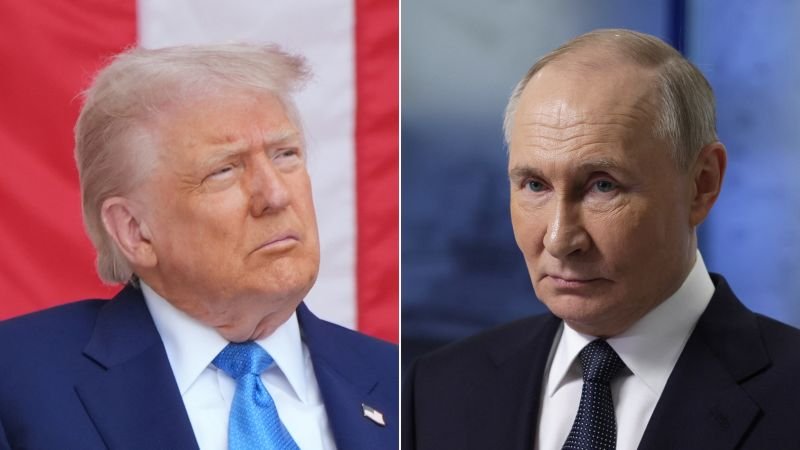CNN
—
Every president thinks they can change the world – and Donald Trump has an even greater sense of personal omnipotence than his recent predecessors.
But it’s not working out too well for the 47th president. Trump might intimidate tech titans to toe the line and use government power to try to bend institutions like Harvard University and judges, but some world leaders are harder to bully.
He keeps being ignored and humiliated by Russian President Vladimir Putin who is defying the US effort to end the war in Ukraine. Russian media is now portraying Trump as the tough talker who always blinks and never imposes consequences.
The president also thought that he could shape China to his will by facing down leader Xi Jinping in a trade war. But he misunderstood Chinese politics. The one thing an authoritarian in Beijing can never do is bow down to a US president. US officials say now they’re frustrated that China hasn’t followed through on commitments meant to deescalate the trade conflict.
As with China, Trump backed down in his tariff war with the European Union. Then Financial Times commentator Robert Armstrong enraged the president by coining the term TACO trade — “Trump Always Chickens Out.”
Everyone thought that Trump would be on the same page as Benjamin Netanyahu. After all, in his first term he offered the Israeli prime minister pretty much everything he wanted. But now that he’s trying to broker peace in the Middle East, Trump is finding that prolonging the Gaza conflict is existential for Netanyahu’s political career, much like Ukraine for Putin. And Trump’s ambition for an Iranian nuclear deal is frustrating Israeli plans to use a moment of strategic weakness for the Islamic Republic to try to take out its reactors militarily.
Powerful leaders are pursuing their own versions of the national interest that exist in a parallel reality and on different historical and actual timelines to shorter, more transactional, aspirations of American presidents. Most aren’t susceptible to personal appeals with no payback. And after Trump’s attempts to humiliate Ukrainian President Volodymyr Zelensky and South African President Cyril Ramaphosa in the Oval Office, the lure of the White House is waning.
Trump spent months on the campaign trail last year boasting that his “very good relationship” with Putin or Xi would magically solve deep geopolitical and economic problems between global powers that might be unsolvable.
He’s far from the first US leader to suffer from such delusions. President George W. Bush famously looked into the Kremlin tyrant’s eyes and “got a sense of his soul.” President Barack Obama disdained Russia as a decaying regional power and once dismissed Putin as the “bored kid in the back of the classroom.” That didn’t work out so well when the bored kid annexed Crimea.
More broadly, the 21st century presidents have all acted as though they’re men of destiny. Bush came to office determined not to act as the global policeman. But the September 11 attacks in 2001 made him exactly that. He started wars in Afghanistan and Iraq — which the US won, then lost the peace. And his failed second term goal to democratize the Arab world never went anywhere.
Obama tried to make amends for the global war on terror and travelled to Egypt to tell Muslims it was time for “a new beginning.” His early presidency pulsated with a sense that his charisma and unique background would in itself be a global elixir.
Joe Biden traveled the globe telling everyone that “America is back” after ejecting Trump from the White House. But four years later, partly due to his own disastrous decision to run for a second term, America — or at least the internationalist post-World War II version – was gone again. And Trump was back.
Trump’s “America First” populism relies on the premise that the US has been ripped off for decades, never mind that its alliances and shaping of global capitalism made it the most powerful nation in the planet’s history. Now playing at being a strongman who everyone must obey, he is busily squandering this legacy and shattering US soft power — ie. the power to persuade — with his belligerence.
The first four months of the Trump presidency, with its tariff threats, warnings of US territorial expansion in Canada and Greenland and evisceration of global humanitarian aid programs show that the rest of the world gets a say in what happens too. So far, leaders in China, Russia, Israel, Europe and Canada appear to have calculated that Trump is not as powerful as he thinks he is, that there’s no price for defying him or that their own internal politics make resistance mandatory.


































